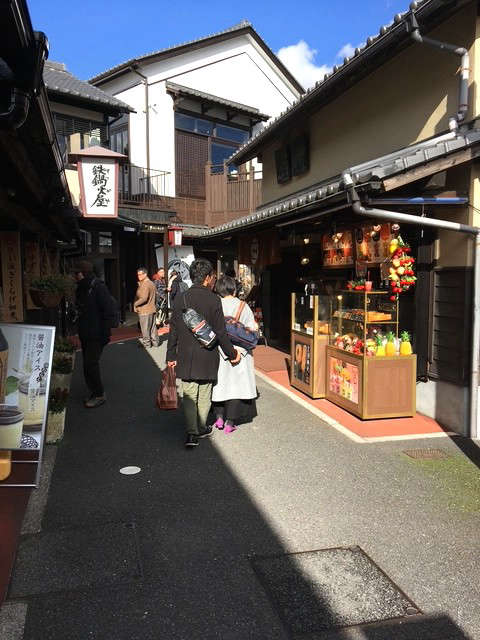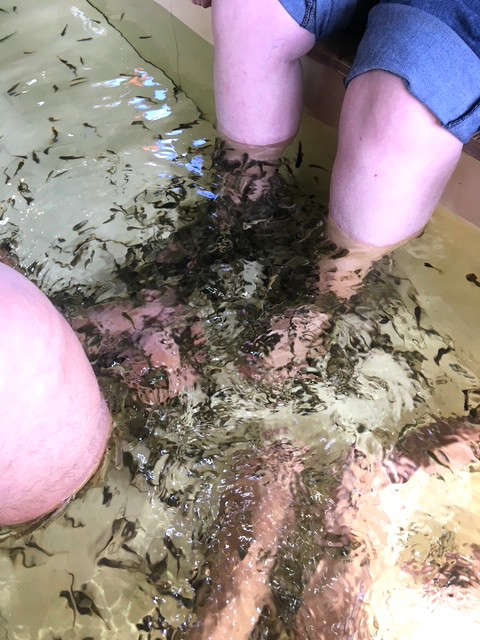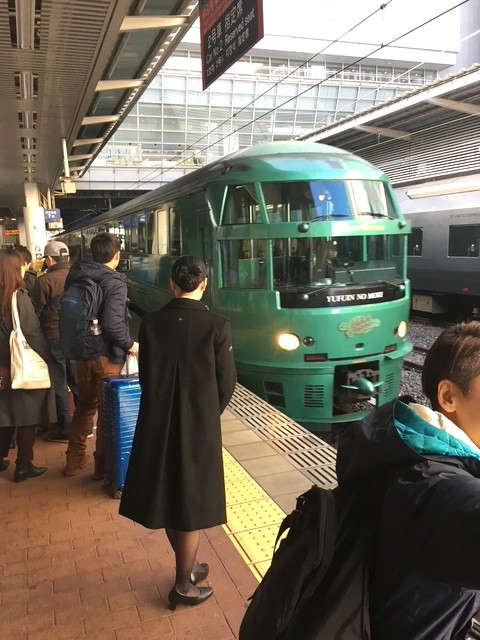
As promised in my last column, I am finishing up the series of hot spring related columns with one more called “Yufuin.”
Of all the ones I have written about, I have visited Yufuin the most. It is located in a neighboring prefecture called Oita and it is about 30 kilometers from Beppu, the more well-known and visited hot spring town I wrote about before.
My university used to have a yearly retreat there for many years for the first-year students shortly after the semester began in April. This is quite a good time of year to visit there, with spring flowers bountiful and the weather still cool and comfortable. We always stayed in a small inn that featured a nice hot spring bath that the other professors and I enjoyed.
The students were more interested in exploring and bonding with each other over meals than really dipping into the hot spring baths, but some did, for sure.
The thing I like about Yufuin is that it is easily accessible by train and it is a very walkable town. Many of the medieval streets are curvy and an abundance of cafes and small shops abound all throughout the city.
Yunostubo Street is especially quaint and lovely, offering many types of shops, cafes, and restaurants. When we visited there, we did the fish foot bath where fish descend upon your feet to gnaw away loose and dead skin cells.

This activity isn’t for everyone, but if you aren’t too ticklish and want to have a unique experience, it is a novelty to try it at least once (photo). The hot springs can be found throughout the city and many small hotels and inns feature hot springs in their pamphlets.
Yufuin is located at the base of Mount Yufu which towers above the city and offers a scenic respite while soaking in the hot springs. At the end of the main street, there is a small pond called Lake Kinrin; it is very meditative and pleasant to stroll around it using the many walking paths that are available to visitors.

Considered to be one of the most popular resort towns in all of Japan, Yufuin has plenty of traditional inns, called ryokan, or more modern hotels to choose from. I have stayed in both and they each offer their own unique qualities.
As I age, though, I find I am more comfortable in hotels that offer beds rather than ryokan that have futons on the floor. Getting up and down just isn’t as easy as it used to be!

The nice thing about Yufuin is that it welcomes “day visitors” so one could theoretically arrive in the morning, enjoy various hot spring baths, then head back to Fukuoka City or to Oita City in the late afternoon or evening. It isn’t necessary to reserve an actual room, so you can visit hot springs in various hotels and inns as a day visitor.
I highly recommend staying at least one night, though, because it just makes the experience more memorable and relaxing. There are plenty of shops and cafes to visit, too, and staying overnight allows you more time to explore the city on foot.
As with the other onsen towns I have written about in the past several columns, Yufuin’s hot springs have medicinal benefits that is one of the alluring appeals for locals and foreigners alike to spend time in the healing waters. Especially, people with neuralgia, myalgia, and arthritis find the curative waters to relieve some of their symptoms from these ailments.
Also, people with gastrointestinal diseases find the hot spring waters to be especially helpful in offering them relief. Some of the hot springs can be imbibed and people who suffer from ailments such as gout, diabetes, constipation and even obesity find the waters to be beneficial.
Even though Beppu is more widely known, Yufuin has been steadily gaining in popularity, especially amongst foreign tourists. The last time I visited there, I remember being surprised by the number of huge tourist buses rolling into the area filled with tourists from China, Korea, and Thailand.
There is also a quaint train that will take you from Fukuoka City to Yufuin called the “Yufuin-no-Mori” train that takes a little over two hours but it offers breathtaking views of the countryside and at one point it will slow down to offer passengers and opportunity to take photos of a natural waterfall that is on the route.

The train attendants are very tourist friendly and bring around little uniforms for children to put on to take photos (photo).
One of my weaknesses is ceramics, especially the blue and white “Imari” style of pottery. There were a variety of shops that featured this type of ceramic, so of course, I had to indulge my guilty pleasure and pick up a few things!
For Ghibli fans, there is also a shop that features merchandise from this studio called “Donguri No Mori” and it is located on the main shopping street of Yunotsubo.
There was a cat café there, too, where you can go for a cup of coffee and interact with cats that are lazing around the shop.
Outside of the city, accessible by car or taxi, on a small mountain, is a great pizza place that features oven-fired pizzas with fresh, homegrown vegetables. The restaurant is called Pizzaria Kunagi No Oka and it is quite good. They do have outdoor seating, as well as inside seating, but you must get there early because it fills up and the wait can be long.
Of course, the hot spring waters are the real draw to the city and you will not be disappointed because they are so lovely and relaxing. For many foreign visitors, the idea of bathing with strangers completely naked can be a bit daunting, but trust me, after doing it once you will be a convert and then seek out as many onsen baths to experience as you can.
Hot spring bathing is one of Japan’s many national treasures, for sure.






